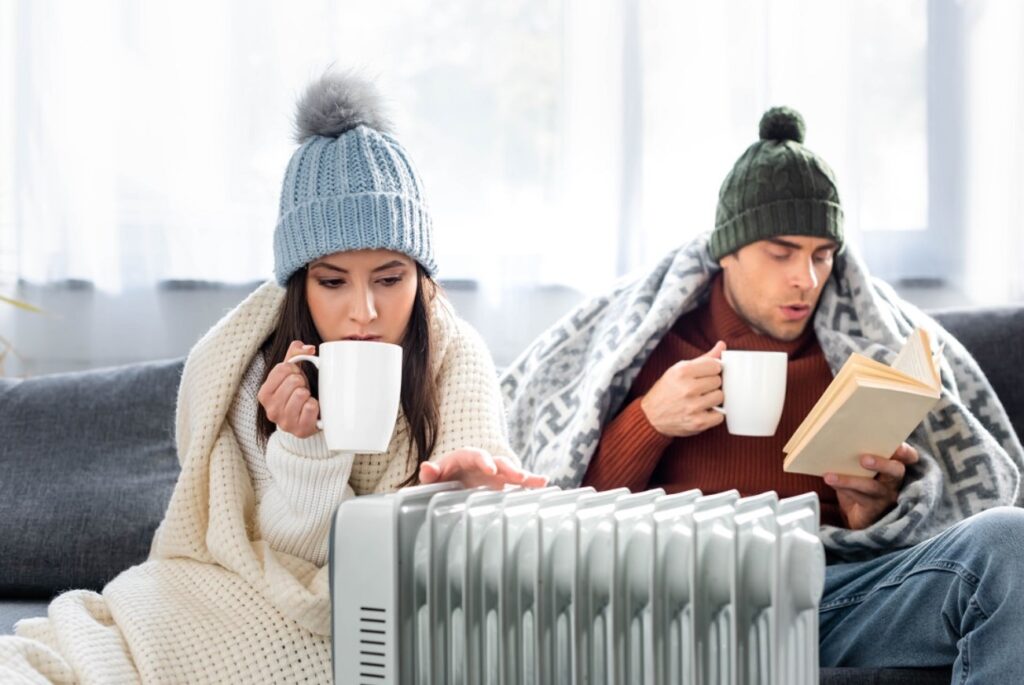Different Types Of Heating Options That Can Be Installed At Home
During a renovation, the range of possibilities on what type of heating system to install in your home is very wide and being able to get a clear idea in a short time is not so simple. My advice is always to rely on a competent professional, who will help you to evaluate each solution well, with estimates in hand. And to let you clearly and unequivocally explain three parameters that determine the actual economic advantage or disadvantage: installation, management, and maintenance.

1. Fireplaces, stoves, and wood-burning boilers
The fireplace and the pellet or wood-burning stove are aesthetically the most spectacular solutions.
Undisputed protagonists of the room where they are placed, they have a moderate installation cost, but their thermal output is generally limited to the environment where they are placed.
They are undoubtedly more effective if they are integrated with a ventilation system, or also dedicated to heating the water that will circulate in the radiator system. In general, it is better to consider it a heating system only for small rooms or second homes.
2. Radiators
The operation of this heating system is by convection: once heated the air rises, while the cold one descends. This means that the radiant elements (radiators) must always be very hot, and the boiler must work to keep the water at a high temperature, thus generating a higher fuel cost.
In the cost / benefit assessment, however, I believe that they should be kept if they are already present in the apartment, especially if you are equipped with a condominium heating system. Of course, you can replace the radiators or check their proper functioning and possibly change the pipes that are too old and worn.
If, on the other hand, the system is autonomous and you decide to redo it from scratch, it is worth evaluating other systems because this is probably not the most advantageous in terms of efficiency. You can also invest in one of the best room heater for winter available in marketplaces.
3. Fan-coils
In this case the basic concept is air recirculation: the heat exchange between the fluid contained in the pipes and the air, makes it move by convection, aided by an electric fan contained in the device.
There are two types of fan coils: one concealed in the false ceiling and the other similar to a piece of furniture placed on the ground; the choice depends on the aesthetic result that is preferred.
The most interesting aspect of this system is that it works equally well for both heating and cooling. Its efficiency is lower than that of radiant floor panels, but so is its initial installation cost, and it heats up the room more quickly.
In my opinion it is particularly suitable for offices, while in the home it could give a little disturbance due to the excessive movement of air and the hum of the fan when it is in operation.
4. Floor heating
The underfloor heating is the most efficient type of heating and tested in new buildings. It works by irradiation, with water that is not excessively hot and long times to reach the desired temperature and is ideal with a gas or electric condensing boiler.
Once the desired temperature is reached, it is easy to maintain it, remembering that it is more effective and economical if it is always on. The only attentions to pay when making a choice of this type are: check the thickness of the slab so that it is suitable for installing coils or radiant panels; choose a floor that has a suitable thermal conductivity (parquet for example should not be too thick); install a thermostat in each room to have better control of the temperature in the environment; make sure of the good quality of the pipes, because, although rare, a leak or breakage of one of them would mean the complete renovation of the floor.
5. Wall and baseboard heating
Compared to the previous one, it is based on the same operating principle: the covering of the walls with radiant panels or coils that emit heat. On the other hand, in the case of pipes in the skirting board, the heat is emitted through a slot positioned in the upper part, generating a thermal blade near the wall.
The advantage, in addition to the greater ease of installation, is that the thermal comfort comes from the sides and there is no risk of having too much temperature difference between head and feet. Furthermore, being placed on the side walls, it holds the internal temperature better by acting as a thermal barrier with the outside.
The disadvantages, however, are significant for a home, because it becomes more binding in the arrangement of the furniture. In addition to not being able to place furniture that is too bulky which limits its efficiency, care must be taken to hang pictures and shelves.
6. Ceiling heating
This type of heating also belongs to the family of radiant panels. The operation is always the same and, in my opinion, it is the easiest to install because there is no need to intervene on the envelope of the apartment, but simply lower the ceiling.
However, it should be considered that the heat goes upwards: the risk, therefore, is to have the upper part of the body at a higher temperature than that of the feet, which remain in the colder air when they are at the bottom.
The ideal in this case would be to use this type of system to refrigerate, exploiting the heaviness of the cold air: the benefit generated would thus be more homogeneous.


